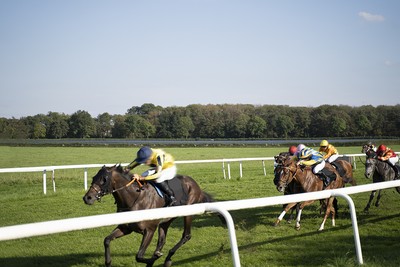 In the UK and Ireland, the sport of horse racing consists of two professional branches; Flat racing, and National Hunt (NH) or Jumps racing, with the flat action dominating the summer months and the National Hunt fare keeping us all entertained over the winter and on into the major festivals of the spring.
In the UK and Ireland, the sport of horse racing consists of two professional branches; Flat racing, and National Hunt (NH) or Jumps racing, with the flat action dominating the summer months and the National Hunt fare keeping us all entertained over the winter and on into the major festivals of the spring.
Differentiating between the two arms of the sport is usually a straightforward task. As the name suggests, Flat racing takes place on the level, i.e., featuring no obstacles of any kind. National Hunt racing, meanwhile, requires the contenders to safely negotiate a series of hurdles or fences on their way to the winning line – or at least it does most of the time…
A Jumpless Jumps Race
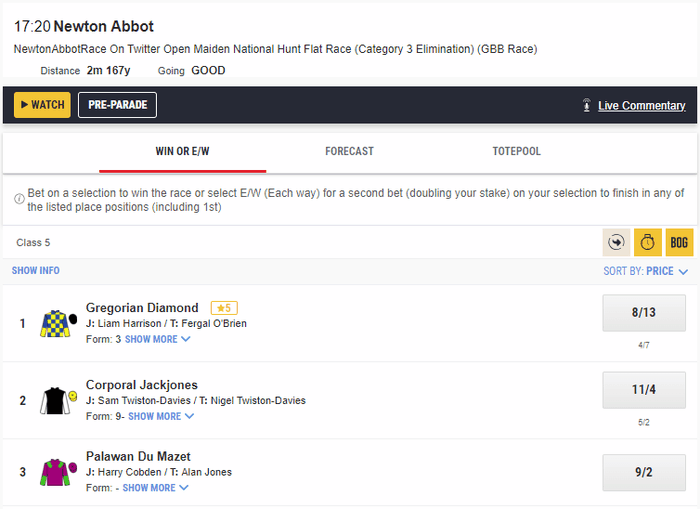
Just to prove that it is not just cricket which has strange rules seemingly designed to keep newbies in a state of confusion, there are NH races which feature no obstacles. There is just one type of contest which appears to blur the lines between Flat and National Hunt racing. Falling under the National Hunt umbrella is a category of events known as National Hunt Flat races. Sometimes abbreviated to NHF on the racecard, these races are commonly referred to as bumpers.
The term National Hunt Flat Race is fairly self-explanatory – clearly (we think!) indicating that no obstacles will feature in the contest. But why are these races considered to be National Hunt rather than Flat events? What kind of horses tend to run in them? And why on earth are they referred to as bumpers?
The simple definition of a bumper is a flat race designed for National Hunt horses, run under the rules of National Hunt racing, and taking place as part of a National Hunt meeting. Race distances are most commonly in the 1m5f to 2m range but occasionally extend to 2m4f.
Why Do Horses Run in Bumpers?

The primary purpose of a bumper is to provide a category of races for runners taking the first steps of their racing career. Given the lack of experience of these fledgling National Hunt performers, the simplicity of the challenge is seen as attractive by many owners and trainers. It is a great way of giving their horses valuable experience of the racecourse and heat of battle, without the added complications and physical demands of having to jump a hurdle or fence.
A common career path of a National Hunt horse begins in one or more bumper events. After this they then move on to maiden and novice hurdles, followed by open and handicap hurdle contests and subsequently on to chasing if suitable. Note, however, that this pathway is far from set in stone and different trainers will take their own approach, dependent on the horse.
By their nature, i.e. consisting of inexperienced runners – many of whom may not yet have been assigned an official rating – almost all bumper events are run as weight for age affairs. This means that the only differences in the weights carried are as a result of the sex and age of the horse. Fillies and mares carry less than horses and geldings, and four-year-olds carry less weight than their older rivals.
Why Don’t Bumper Horses Run in Normal Flat Races?
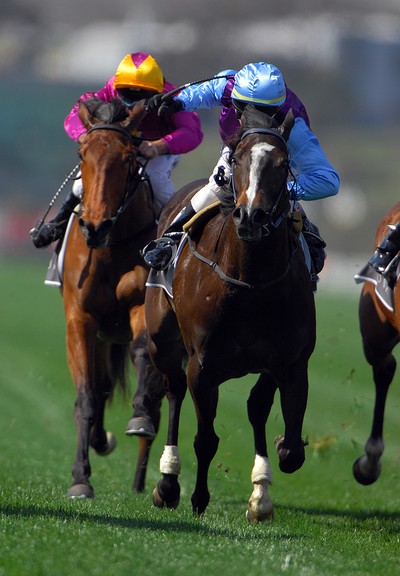 Many may pose the question that if connections wish for a National Hunt horse to run on the level, then why not simply enter the horse in a regular Flat race?
Many may pose the question that if connections wish for a National Hunt horse to run on the level, then why not simply enter the horse in a regular Flat race?
This is a perfectly legitimate enquiry and, in fact, may be an option for many runners. Many, but not all, as the breed requirements for Flat and National Hunt racing are slightly different. In order to compete in any official Flat race, a horse must be a thoroughbred, which is to say a horse whose entire lineage can be traced back through the official stud book.
This thoroughbred requirement is not in place in National Hunt racing. Many National Hunt horses certainly are thoroughbreds, but others aren’t. For those that aren’t, bumpers represent the only racing option where they can ease their way into things without having to face hurdles or even fences.
Which Horses are Eligible to Compete in Bumpers?

When first introduced onto the racing scene back in 1891, exactly which horses could run in a bumper was determined by a fairly convoluted set of rules and regulations. Thankfully, in the modern era, simplicity has prevailed, with the qualifying criteria now consisting of just three key rules:
- Bumpers are only open to runners aged seven or younger. Note that many individual events have more specific criteria, most notably the Champion Bumper at the Cheltenham Festival, which is restricted to runners between four and six years of age
- Any horse which has previously run in a National Hunt Hurdle or Chase, will NOT be permitted to run in a bumper
- Any horse to have previously run in a Flat race, will NOT be permitted to run in a Bumper. Conversely, runners who have taken part in a Bumper are permitted to run in a Flat contest – provided they qualify as a thoroughbred runner, as demanded by the rules of Flat racing
With these rules in place, bumpers are essentially restricted to runners aged seven or under who meet one of the following criteria:
- Have no previous runs to their name
- Have only previously run in other bumpers
- Have only previously run in an AQPS race in France – AQPS races being the French version of bumpers
- Have only previously run in a Point-to-Point – P2P racing being the amateur version of National Hunt racing
Where Does the Name Bumper Come From?
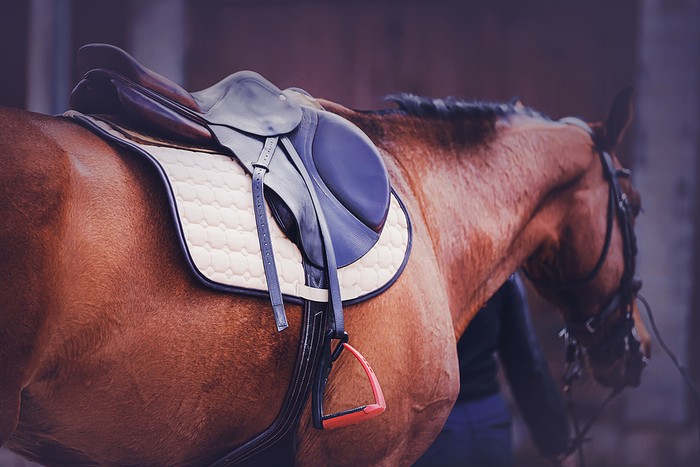
So that’s what they are, but where does the unusual name come from? The answer to this question is related – not to the race conditions or the horses – but rather the men and women in the saddle. In a bumper contest, it is not only the horses which tend to lack experience but also the jockeys.
Originally, only Conditional and Amateur riders were permitted to compete in these races – a Conditional Jockey being an inexperienced rider in the early stages of their career, and an Amateur, of course, being an individual who competes predominantly as a hobby rather than as a full-time career. Whilst many bumpers, particularly those at the bigger meetings, are open to professional riders in the modern era, a significant percentage continue to be restricted to these second-tier riders.
Given their relative lack of experience and/or talent compared to a professional jockey, Conditionals and Amateurs are often easy to identify courtesy of their less-than-polished riding styles. One might even say that things look a little “bumpy” in the saddle.
A degree of bouncing up and down is almost unavoidable, particularly in the closing stages of the race. Nevertheless, the difference between amateur riders such as seen here in the 2004 Fulke Walwyn Kim Muir Memorial Challenge Cup, and a professional jockey such as the legendary Ruby Walsh, helps to highlight the thinking behind the term “bumper”.
What are the Biggest Bumper Races?
The vast majority of bumper races in the UK and Ireland tend to be low-grade affairs, with minimal prize money. However, as with the other race types, the bumper category does feature several seasonal highlights.
On British shores, it is the Champion Bumper at the Cheltenham Festival which is the biggest bumper contest of the year by a considerable margin. Offering £80,000 in total prize money in 2023, and the only British Grade 1 Bumper of the season, this has been won by a number of future superstars over the years. These horses have included Florida Pearl, the mighty Cue Card, and Envoi Allen.
The Champion Bumper may be the clear standout, but there is a steady stream of high-quality bumper contests coursing through the National Hunt season, beginning in November and running through to April. Each year sees a total of 11 bumper events rated at Listed level or above, with the full list running as follows.
British Bumper Races at Listed Level or Above
| Race | Class | Course | Month |
|---|---|---|---|
| Mares’ Standard Open NH Flat Race | Listed | Cheltenham | November |
| Cheltenham Open National Hunt Flat Race | Listed | Cheltenham | November |
| Mares’ Open National Hunt Flat Race | Listed | Huntingdon | December |
| Championship Stanard Open NHF Race | Listed | Ascot | December |
| Standard Open National Hunt Flat Race | Listed | Cheltenham | January |
| Alan Swinbank Mares’ National Hunt Flat Race | Listed | Market Rasen | January |
| Standard Open National Hunt Flat Race | Listed | Newbury | February |
| Champion Bumper | Grade 1 | Cheltenham | March |
| Mares’ National Hunt Flat Race | Listed | Sandown | March |
| Nickel Coin Mares’ Standard Open NH Flat Race | Grade 2 | Aintree | April |
| Champion Standard Open NH Flat Race | Grade 2 | Aintree | April |
Over in Ireland, the bumper season follows a broadly similar pattern, with regular quality contests throughout the campaign. However, once again there is just the one Grade 1 Bumper, which comes at the big Punchestown Festival in late April/early May.
Irish Bumper Races at Listed Level or Above
| Race | Class | Course | Month |
|---|---|---|---|
| Irish EBF Mares INH Flat Race | Listed | Navan | November |
| Future Champions INH Flat Race | Listed | Navan | December |
| Goffs Future Stars I.N.H Flat Race | Grade 2 | Leopardstown | February |
| Coolmore Irish EBF Mares I.N.H Flat Race | Grade 2 | Leopardstown | February |
| Champion (Pro/Am) INH Flat Race | Listed | Limerick | March |
| Total Enjoyment Mares Flat Race | Listed | Fairyhouse | April |
| Champion INH Flat Race | Grade 1 | Punchestown | April/May |
| Weatherbys Ireland EBF Mares Bumper | Grade 3 | Punchestown | April/May |
The Last Act on a National Hunt Card
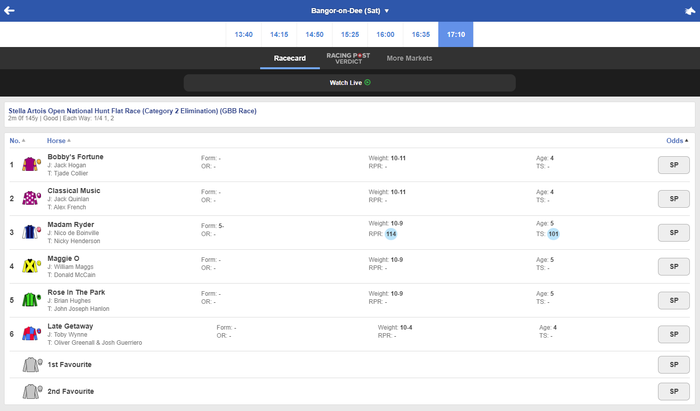
If you are hoping to catch a bumper race when attending a National Hunt meeting, be sure not to leave before the last race, as this is almost invariably where they are found. Some may assume this is because they are the least interesting contest of the day, but the actual reason is more practical in nature.
Many National Hunt courses have separate Hurdles and Chase tracks, but very few – in fact, none that we can think of – have a dedicated bumper track. As such, bumper events usually take place on either the Hurdle or Chase course, meaning that all obstacles must be manually removed before the race can begin.
It obviously makes far more sense to complete this task once all of the scheduled jumps events have been completed, rather than holding a bumper in the middle of the card. That would likely result in removing all of the obstacles, only for the poor old ground staff to then be asked to haul them back on again for a later contest.
